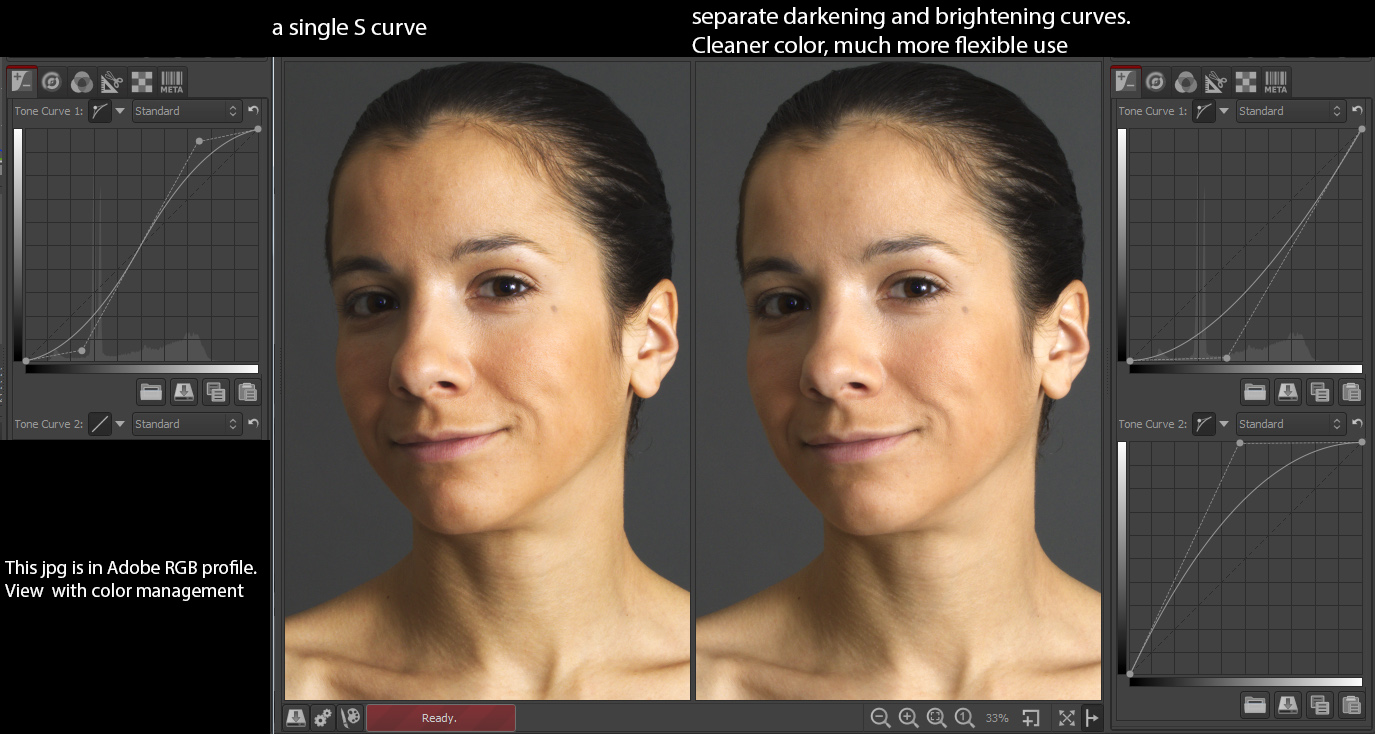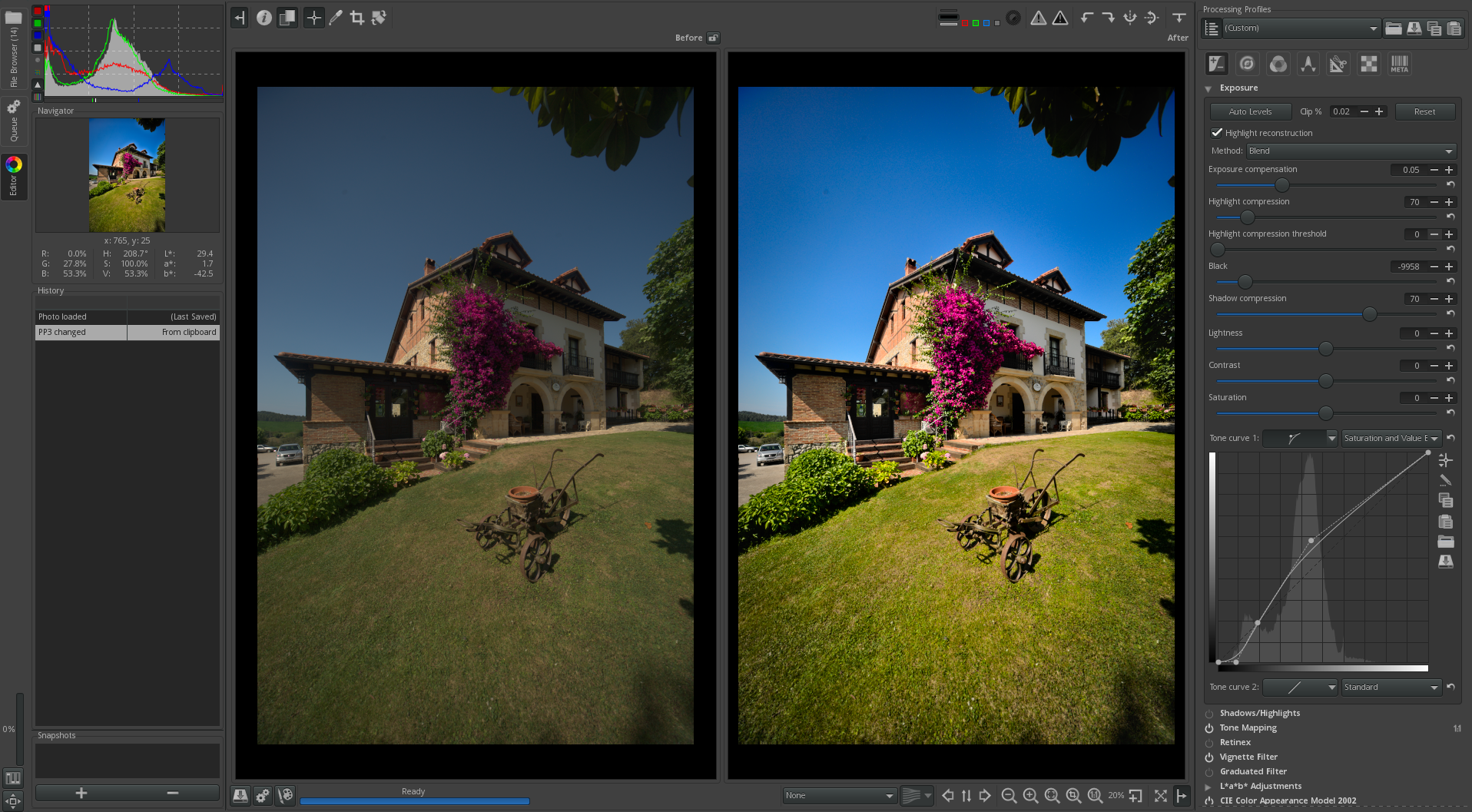

- Rawtherapee tips software#
- Rawtherapee tips trial#
- Rawtherapee tips license#
- Rawtherapee tips download#
When you start RawTherapee you will land in the File Browser tab, and it might be empty. 8- Right-click context menu (you will typically use this to apply some processing profile to all selected files). 7- Sub-tabs of the File Browser: Filter (currently opened), Inspect (to see a full-sized embedded JPEG preview), Batch Edit (to apply some setting to all selected images) and Fast Export (low quality and bypasses some tools but fast saving - don't use this for typical saving!). 4- Filters to limit the thumbnails shown to only those which match some metadata or state. 3- Thumbnails of the currently opened folder. 2- Panels used for navigating to files and folders. RawTherapee in Single Editor Tab Mode - Vertical Tabs, showing: 1- Main sections: File Browser (currently opened), Queue, Editor and Preferences. It is also easy to compile RawTherapee yourself under Linux, Windows and macOS.
Rawtherapee tips download#
To test out newly developed tools for an upcoming release and benefit from other improvements, fixed bugs and optimizations, download a development build. The latest release provides a stable version suitable for most users. RawTherapee can be downloaded from our website or through your package manager. It works very well in conjunction with raster graphics editors, such as Photoshop or GIMP, and a digital asset manager, such as digiKam. RawTherapee has an extensive set of tools specifically aimed at processing photographs.
Rawtherapee tips software#
Started in 2005 by Gábor Horváth, it was released as open-source software in 2010 and has been under development by an international team ever since.
Rawtherapee tips license#
The #1 rule about poking things with sticks is never use your finger.RawTherapee is a powerful cross-platform raw image processing program, released under the GNU General Public License Version 3. Your advice is sound otherwise though, thanks. Even knowing the name of what settings to adjust would help. How do I shoot wide and make architecture look straight, rather than curved? I have no idea what fixes that, but I've heard there are ways to do it. I meant fixing bending, not blending: the "fisheye" effect. (Yeah sometimes I'm a lazy photographer). I personally just try to avoid panoramic shots with wide angle lenses solely because of the extra thought and effort. See if the editor has a profile correction for lens distortion, that should correct the bend that you see in the individual pieces of your merge.

When blending, the more you have to work with the better, in my experience. My best suggestion is to take way more shots than you would otherwise. So maybe see if RawTherapee has presets that you can create but don't worry about trying to buy any.Īs for your interest in wide image blending, I'm assuming you're talking about panoramas. Using someone els's presets directly copies their style and restricts your artistic freedom. Half of the creative process with digital is being able to edit the photo to your preferences. But this brings me to my next point: presets. Likewise, you can find photos you like the editing style of, shoot a similar shot, and compare your edits to your archetype. It's a long and arduous process for me, but being able to condense the edits into a preset has helped me so much. This way, when I get a print from the neg, I can scan it in and compare it to the digital edit. More recently, I've been trying to double down and take the same pictures on digital and film.
Rawtherapee tips trial#
I personally try to emulate classic films (Portra, HP5+, Velvia), and for me it's a lot of trial and error. Once you feel comfortable with the software, then it's easier to develop your style from there. I'm sure the company probably has some tutorials (or someone else has posted them somewhere) showing the more advanced methods you're looking for.

I think the best thing to do with any editing software is to learn the software inside and out first.


 0 kommentar(er)
0 kommentar(er)
